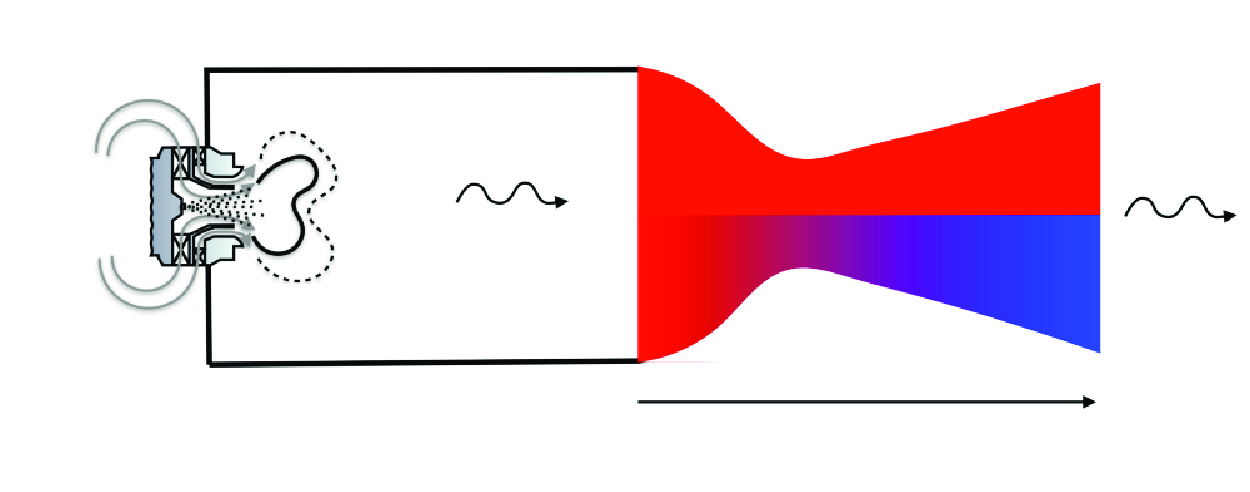No CrossRef data available.
Article contents
Combustion noise modelling of thermally perfect and multi-species gas flow in nozzles
Published online by Cambridge University Press: 11 July 2025
Abstract

Several hypotheses are employed to describe the fluctuating motions within nozzles and to analytically predict combustion noise generation mechanisms. One of these assumptions is that of a calorifically perfect gas mixture, where  $c_p$ is constant. Nonetheless, a realistic flow rather encompasses heat capacities
$c_p$ is constant. Nonetheless, a realistic flow rather encompasses heat capacities  $c_p$ that vary with temperature, i.e.
$c_p$ that vary with temperature, i.e.  $c_p = c_p(T)$, such that the mixture is called thermally perfect. The influence of the mixture assumptions on noise generation mechanisms is re-examined in this paper. To do so, the quasi one-dimensional Euler equations for multi-species, isentropic and non-reactive flow are considered within the nozzle. Their linearisation yields a new prediction model in addition to showing a new entropy-to-entropy coupling mechanism. Relying on either the assumption of low frequencies or the Magnus’ expansion methodology, two analytical solutions are derived and studied. Validation of these two prediction models is then provided relying on unsteady simulations of axisymmetric nozzles with superimposed incident waves. To generalise previous results, parametric studies are performed considering various nozzle flow geometries. Variations of up to
$c_p = c_p(T)$, such that the mixture is called thermally perfect. The influence of the mixture assumptions on noise generation mechanisms is re-examined in this paper. To do so, the quasi one-dimensional Euler equations for multi-species, isentropic and non-reactive flow are considered within the nozzle. Their linearisation yields a new prediction model in addition to showing a new entropy-to-entropy coupling mechanism. Relying on either the assumption of low frequencies or the Magnus’ expansion methodology, two analytical solutions are derived and studied. Validation of these two prediction models is then provided relying on unsteady simulations of axisymmetric nozzles with superimposed incident waves. To generalise previous results, parametric studies are performed considering various nozzle flow geometries. Variations of up to  $10\,\,\%$ are exhibited in a choked flow nozzle between the two mixtures, especially for the indirect entropy noise and the entropy-to-entropy transmission moduli.
$10\,\,\%$ are exhibited in a choked flow nozzle between the two mixtures, especially for the indirect entropy noise and the entropy-to-entropy transmission moduli.
JFM classification
Information
- Type
- JFM Papers
- Information
- Copyright
- © The Author(s), 2025. Published by Cambridge University Press


